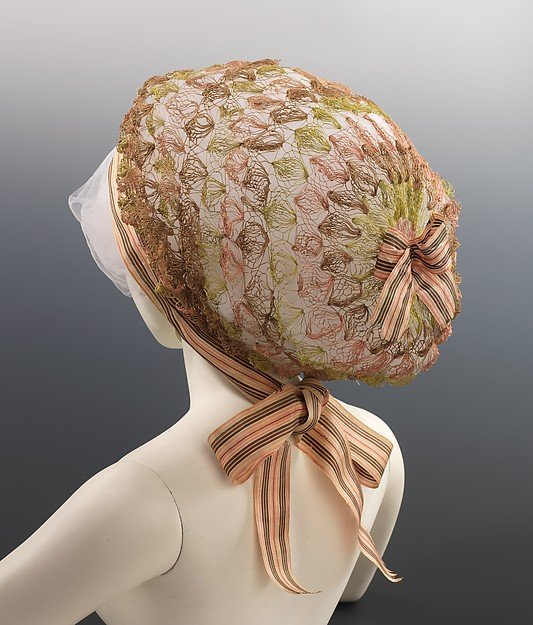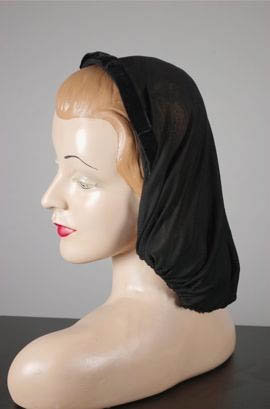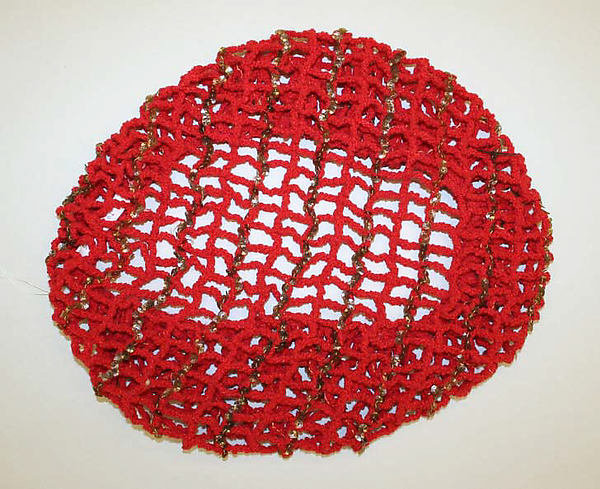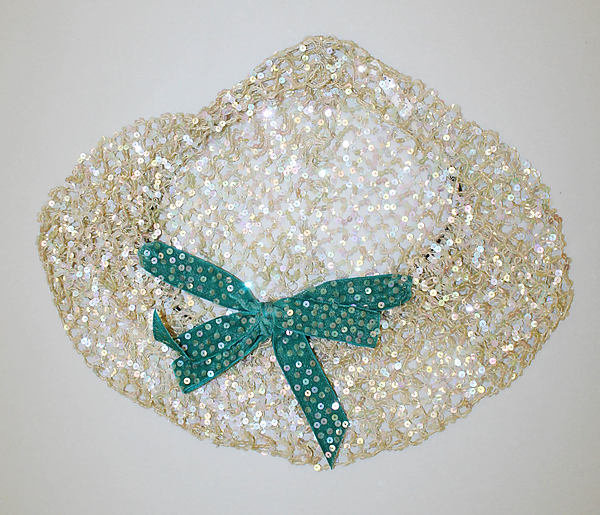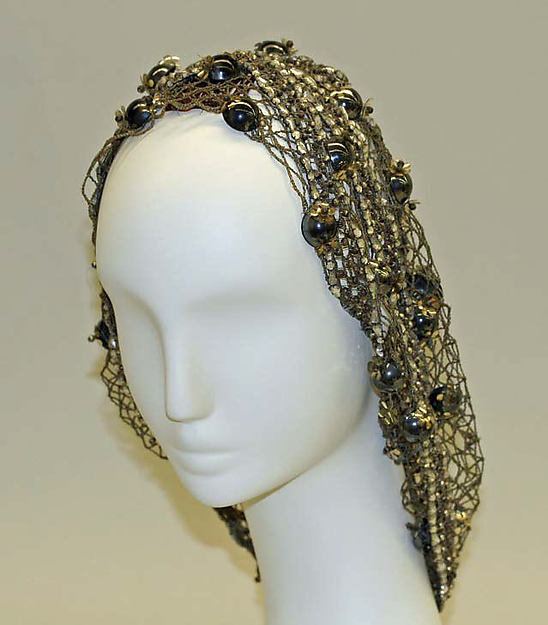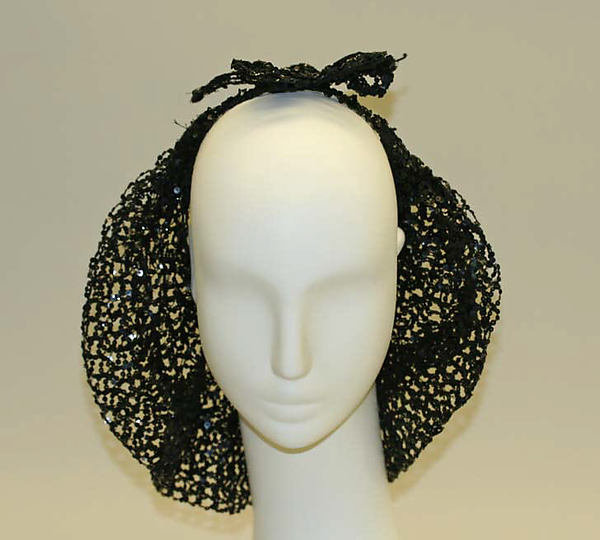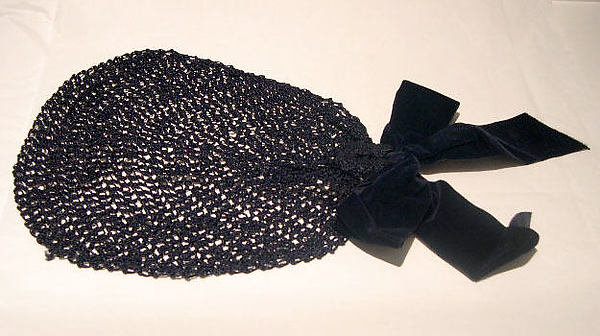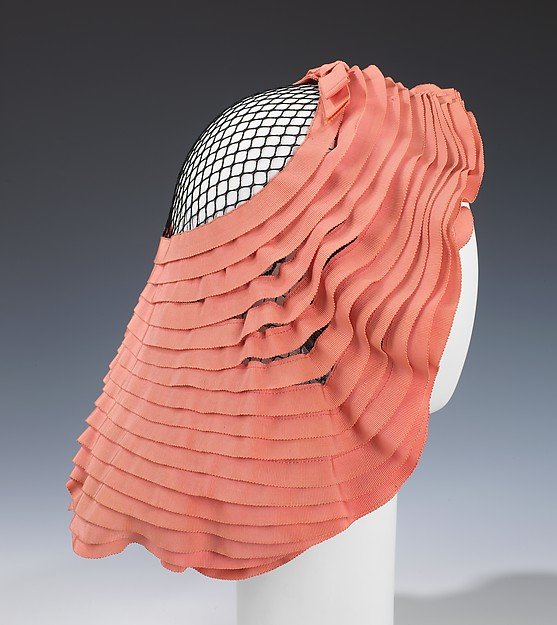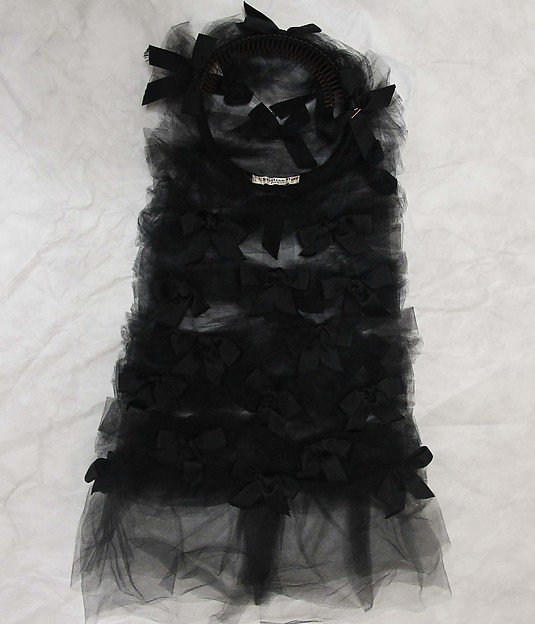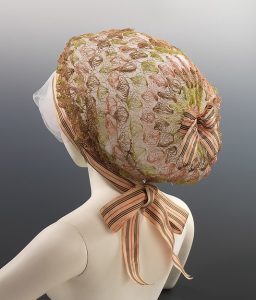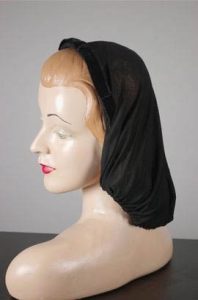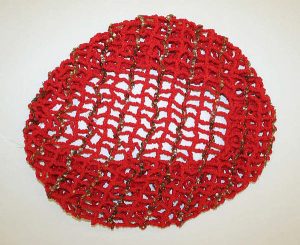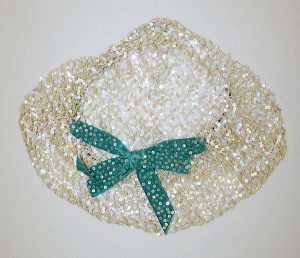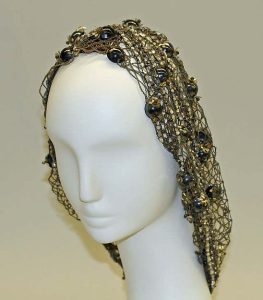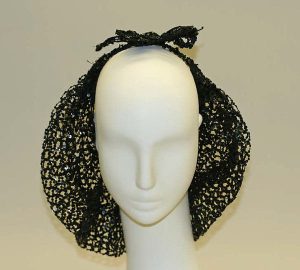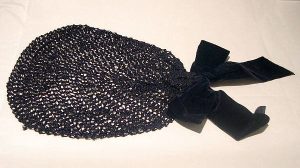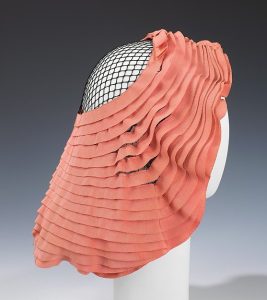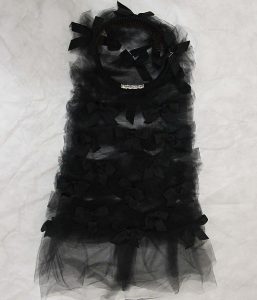A snood is a loosely woven net to contain the hair at the back of the neck.
It descends from medieval hairnets made of gold and scattered with precious jewels.
Mid-Victorian women of the 1850s and 1860s wore crocheted versions, often made at home. Snoods covered the hair at home as well as outdoors beneath the bonnets and small, round hats of the time.
In the 1940s, snoods regained popularity when many women employed in factories during WWII used them to safely secure their long hair while working. The style soon became so fashionable it was adopted for dressy occasions. Lilly Daché even offered a snood at the time.
Written by Ladyscarletts and BetterDressesVintage
